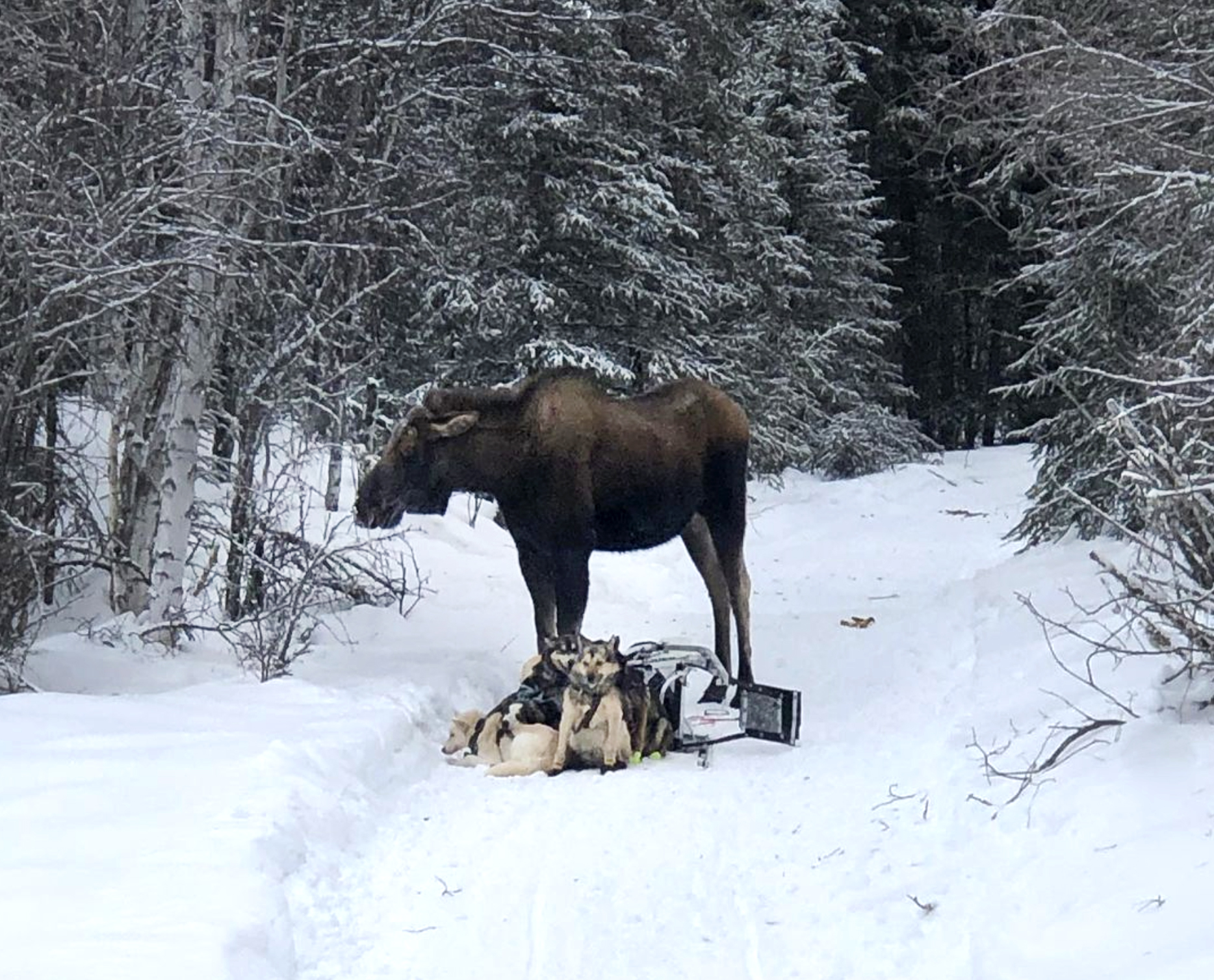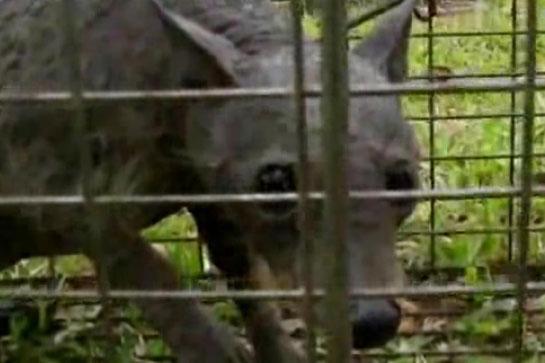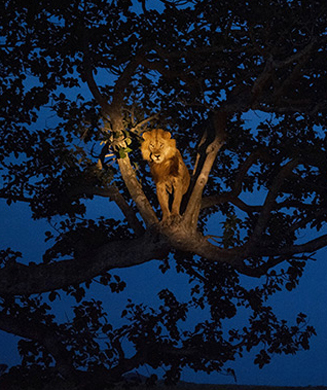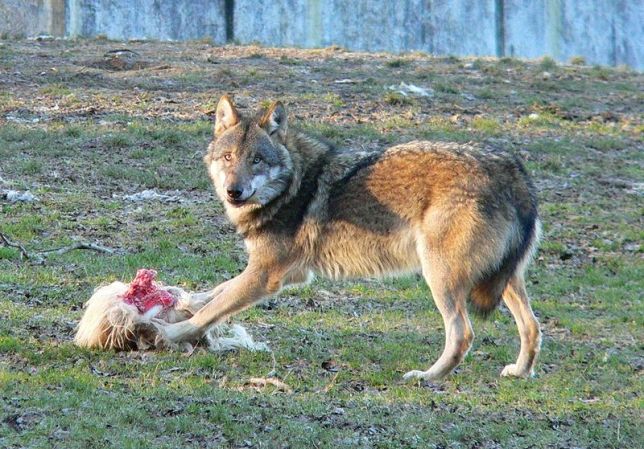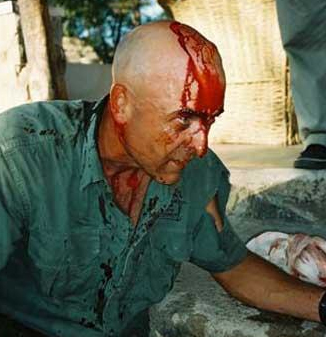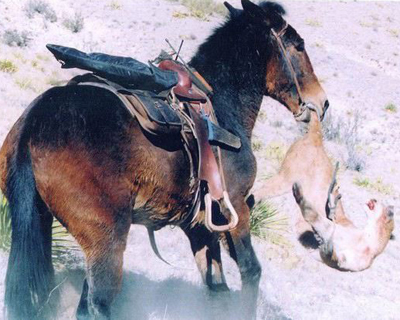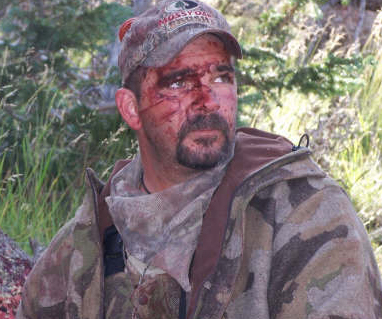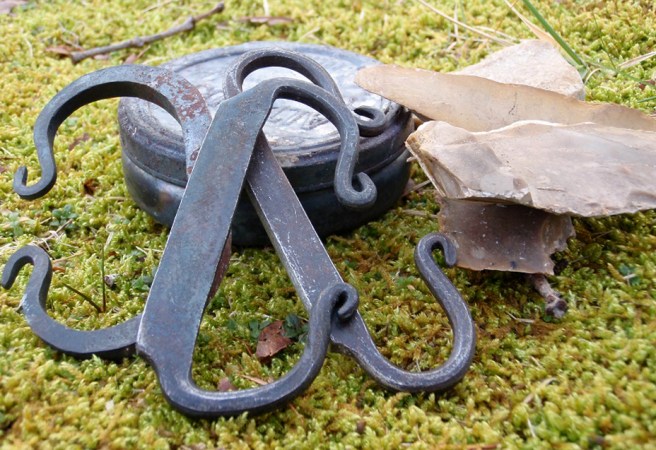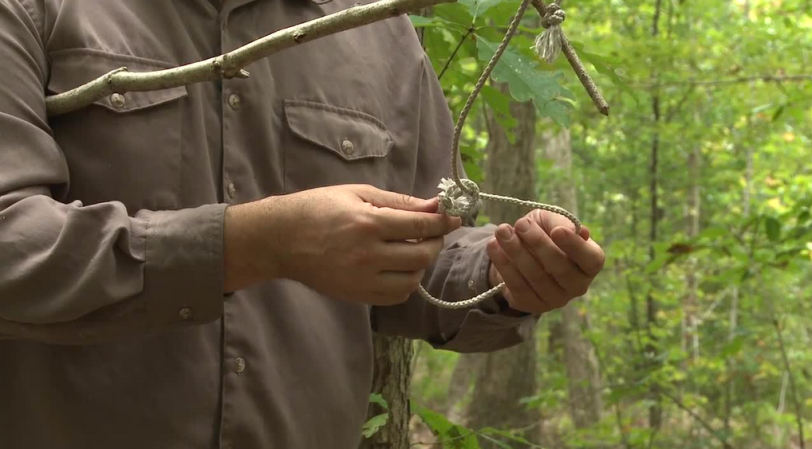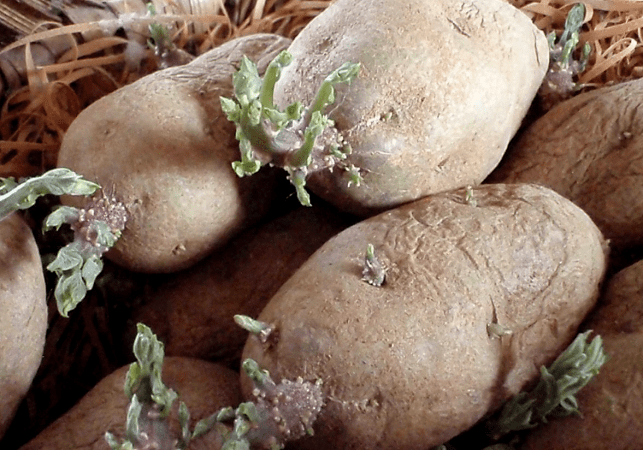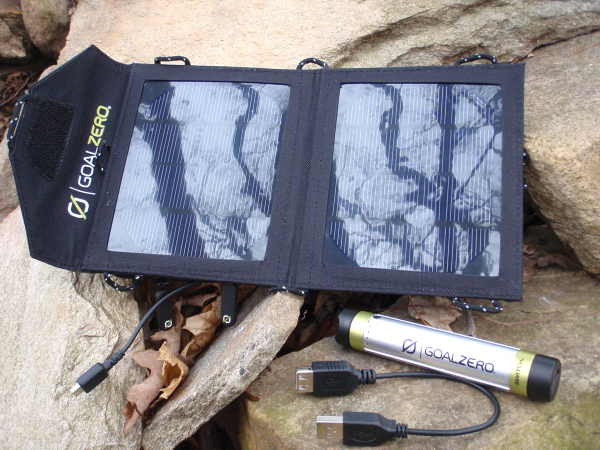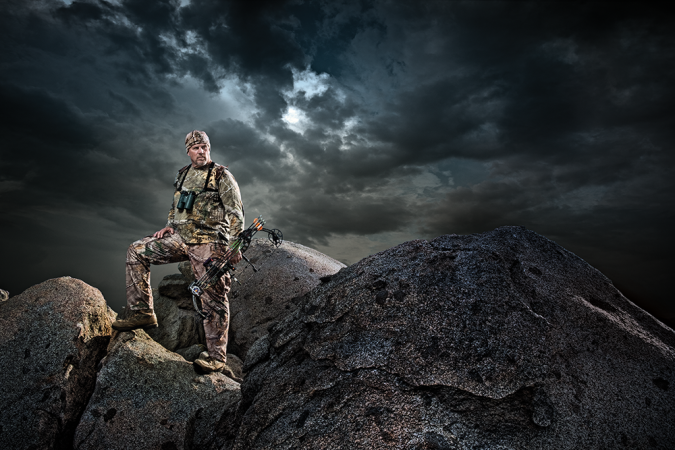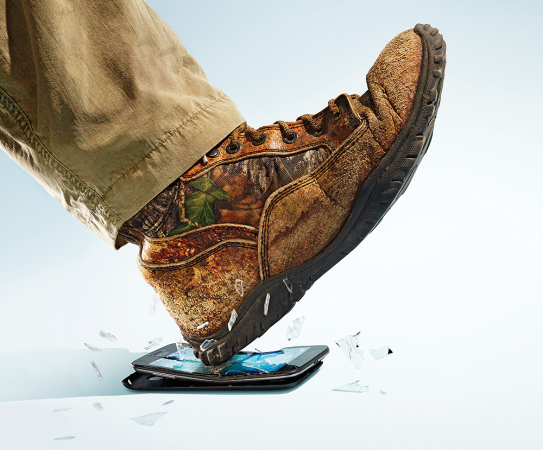It’s not uncommon for Bridgett Watkins to see moose while running her sled dogs in interior Alaska. It is, however, uncommon for those moose to attack mushers. And it’s unheard of for an attack to unfold like the one she experienced Thursday.
A lifelong Alaskan musher, Watkins was midway through a 52-mile Iditarod training run on Feb. 3 when she noticed a moose along the Salcha River trail system southeast of Fairbanks. The bull, which had shed its antlers, was some 500 yards away. That gave her plenty of time to stop and let him trot off.
“I had given this moose lots and lots of space,” the 38-year-old Alaskan told Outdoor Life, explaining that the moose would vanish into the trees only to reappear again. The fourth time this happened, Watkins had just rounded a corner and discovered the bull 150 yards away. So she stopped again, this time anchoring her sled’s hooks in the snow and stepping onto the trail. Her friend and handler Jen Nelson, who was running six more of Watkins’ dogs on a snowmachine behind her, stopped too.
“I put my hooks down and went in front of my team and I got my gun out,” says Watkins, who carries a .380 semi-auto for personal protection. “I thought, man he’s a little bit close. He needs to go.”
And he did. The bull walked around the corner and out of sight for the fifth time.
“I was like, Well, he left again. I guess I’m just going to sit here and wait. We have to wait a while and make sure he’s gone. It wasn’t 10 seconds later that I looked up and he was charging full speed right at me.”
Watkins held her ground. She hoped the bull, now rapidly closing the 150 yards between them, would veer or break off its charge. But she raised her .380 in case it didn’t.
“I even said to myself, Take a deep breath. Steady yourself. I was aimed and waiting—hoping he’d deflect—just steady. I let him get close,” says Watkins, adding that she also waited because she knew her gun wouldn’t be very effective. Although mushers carry bigger-caliber firearms during the fall training season when bears are active, Watkins says, that’s not the norm during the winter. Flare guns and warning shots usually work well for deescalating moose encounters.
When the moose was just yards away, head lowered and barreling toward her, Watkins fired several rounds into its chest and neck—she guesses half of the pistol’s six-round magazine. Then it jammed. Watkins ran back to the cover of the snow machine, scrambling to unjam the pistol and slicing her hand in the process. Blood pouring down her hand now, Watkins cleared the jam and took stock.
The moose was bleeding, too, and standing still amid the 10-dog team. Watkins unsheathed the knife at her waist and freed the six dogs that had been behind her and were still harnessed to the snowmachine. They ran off the way they had come, but the two women were pinned on the trail with waist-deep snow on either side and saplings that that were useless for cover.
The bull surged forward again, this time breaking off his charge and skidding to a stop just feet from the snowmachine. Watkins fired her remaining rounds. But instead of dropping or fleeing, the bull turned and waded into her team of dogs, who were still attached to the gangline.
“We’re standing there and I said, ‘I’m out of bullets, I’m out of bullets, I have no more bullets’ … and I’m like, this is it. I can count the whiskers on his nose. He’s two feet from me.”
Both Nelson and Watkins are emergency room nurses, and they had no illusions about what would happen if the moose ran them over. It would be bad on the packed trail, worse still if he managed to knock them into the deep snow beside it. They took inventory of the tools at their disposal: The large fixed-blade knife, a Garmin InReach GPS, and their cell phones. For several minutes, Watkins held the knife in one hand even as she knew it wouldn’t be enough. In the other she held the Garmin, ready to press the SOS button if the moose charged.
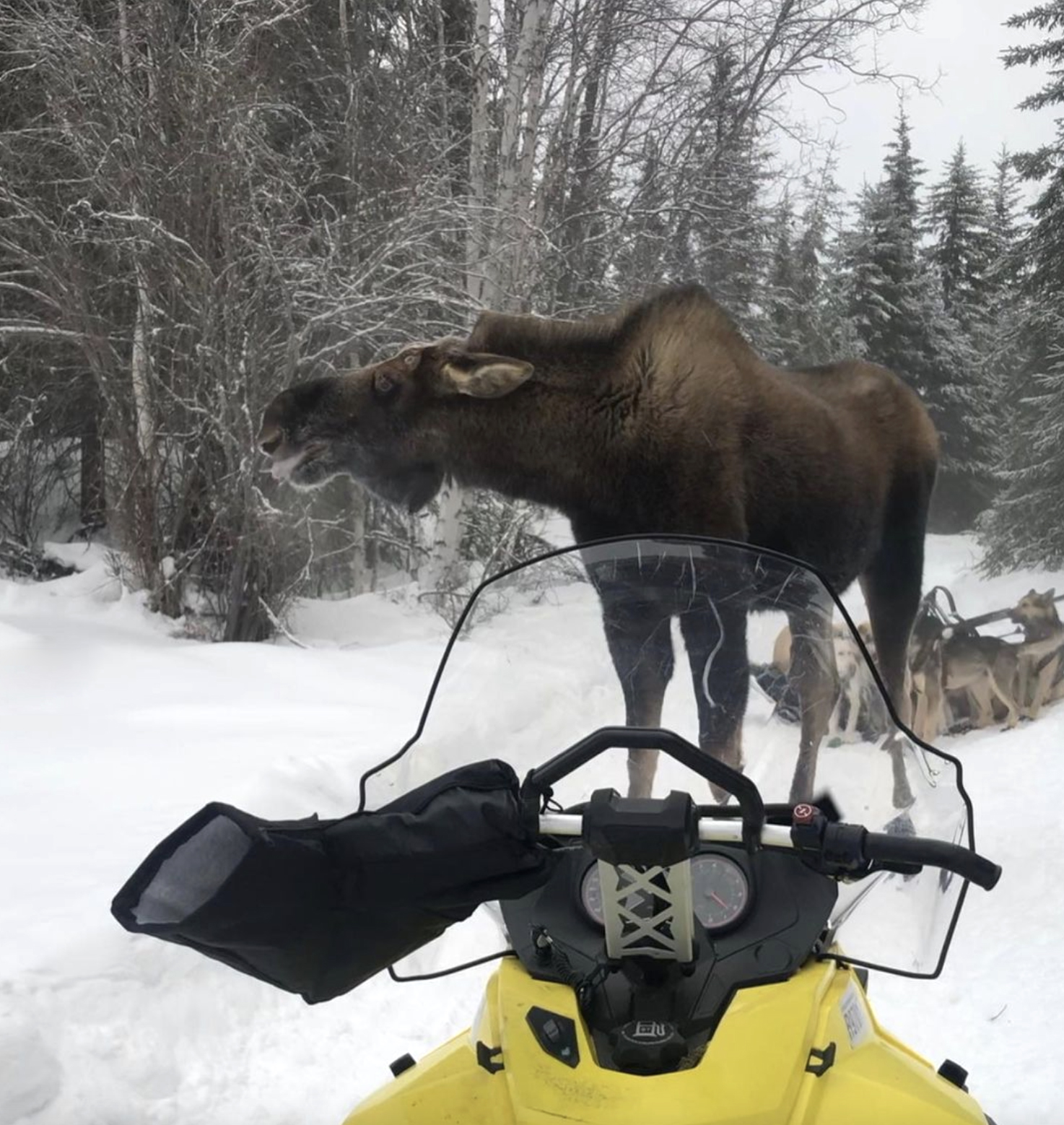
The bull huffed and snorted. Then, luckily for the mushers, it retreated. Unluckily for Watkins’ sled dogs, who were barking at the big animal between them and their owner, the moose turned on them. He stood among and on top of the dogs for the next 50 minutes.
“Any time a dog would move or bark, the moose would go into attack mode,” Watkins says. “Over and over and over. And we would yell and hit things and scream and try to distract him. And when he would stop, we would talk to the dogs. Because they’re standing there looking at me, terrified, and I’d try to keep them calm. C’mon buddy, just sit there, be quiet. I’m here, don’t move. And they were still. But if anybody would whimper or bark, the moose would get this look in his eye and start turning his head and be on top of them. It was horrific.”
Anticipating another charge, Watkins and Nelson backed up the snow machine to put more distance between them and the moose. Nelson stayed on the phone with the Alaska State Troopers. Watkins, who had just one bar of cell service, texted everyone she knew in the area, asking for help and for someone to bring a rifle.
One of Watkins friends who lived along the river replied. He was on his way, but it would take nearly an hour. There was little hope that another musher or snowmachine user would stumble upon them. They had been running a well-traveled trail, but in Alaska, that means only a handful of people use the trail each day.
In the meantime, the moose trashed Watkins sled, which she said helped divert some of the moose’s rage from her dogs and temporarily trap its hooves in the wreckage. Later, Watkins would discover that a pair of cross-country ski poles in the sled had been smashed into more than 30 pieces.
“I have never felt so helpless in my life,” Watkins wrote in a Facebook post about the attack that has been shared more than 8,000 times.
At last Watkins and Nelson heard the drone of an approaching snow machine. The trouble now was that their buddy, who lived upriver, was approaching from the other side of the trail. To get out of the line of fire, the mushers retreated down the trail and behind a hill. They stretched out on their bellies and waited for a shot to ring out.
The Second Ordeal
The moose dropped in its tracks. This solved the most pressing problem, but they were now faced with another major one. The mushers were 20 miles from anywhere, stranded on a trail with 16 dogs and one broken sled. As horrible as watching her dogs get trampled had been, Watkins says this moment may have been worse.
“That’s when all the fear hits you of, what am I about to walk up to? And so I walked up to an entire pile of dogs wrapped up in my sled. And I grabbed each of their heads one by one and said, ‘Are you alive buddy? Are you alive, buddy?’ Like, are you still with me? And all of them looked at me.”
As she cut away the tangled ropes with her knife, freeing each of the dogs, Watkins’ emergency medical training kicked in and she went into “mass casualty triage” mode as she took inventory of their injuries. Her lead dogs were unharmed, and the pair at the rear had slipped out of their harnesses during the attack. There was blood everywhere, but she was able to identify the most critical injuries. The dogs that had been hurt worse were in the middle of the string. One dog, Bill, had broken hind leg, and Watkins removed her parka and wrapped him in it to prevent him from going into shock. It was -5°F out. Two more dogs, Bronze and Jefe, seemed in bad shape, too.
Watkins credits her dad, an experienced musher and outdoorsman, for teaching her the survival skills she needed to get through the next few hours. She says even simple skills—like learning to tie two lines together to make them whole again as she rebuilt the harness—made a huge difference in a critical moment.
Alaskan sled dogs, which have been bred from Siberian huskies and Alaskan malamutes, have a strong pack mentality, Watkins says. The healthy dogs that had initially run off during the attack came back, and they all hung around as she hooked them, one by one, back to the harness she’d rebuilt. It wasn’t until the very end that she realized one dog was missing. Flash, Watkins very first sled dog, was nowhere to be found.
Counting on Nelson and the other volunteers who were responding to her original text messages—locals were en route with snowmachines, trucks, and dog kennels to help where they could—Watkins took the two most injured dogs and climbed onto her friends’ snowmachine. She rode the 30 minutes with both dogs in her lap and met her husband with their dog truck at the trailhead. As they were loading the dogs, a volunteer pulled up on a snowmachine, with Flash on his lap. The dog had been stomped on the head, but was still alive.
From there, it was another 45 minutes to the North Pole Vet, where she says an entire trauma team was waiting, with a vet and vet tech for each dog, and other support and supplies at the ready.
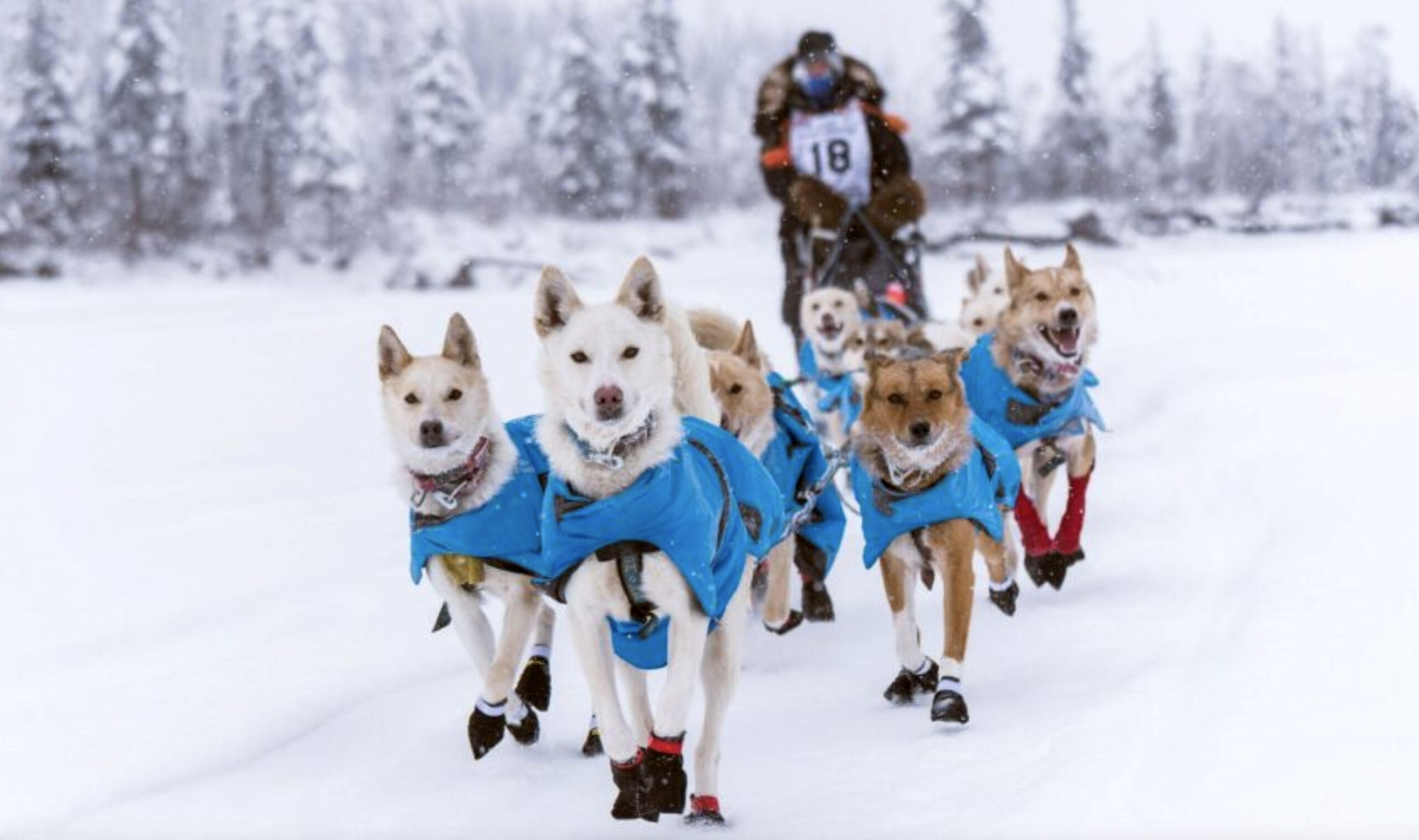
The Aftermath
Several of the good Samaritans who responded to Watkins’ texts helped haul away the moose. Alaskan law stipulates that, in the case of animals killed in defense of life or property, the meat must be distributed to needy families.
“Honestly, I think [the moose] just saw them as a pack of wolves that he was trying to kill,” Watkins says. “Which I understand. In an animal’s mind, that’s what they were.”
Flash narrowly survived surgery for his head wound, which Watkins detailed in a follow-up Facebook post. Bill had surgery to repair his broken leg, while a third dog required surgery to repair internal organ damage, and a fourth had his wounds stapled. Meanwhile, one of Watkins’ close friends and fellow mushers organized a GoFundMe, which raised $9,455 from 114 donors in fewer than 36 hours to cover the four dogs’ vet bills.
In today’s dismaying age of social media Monday-morning quarterbacking, online commenters have jumped on the incident, criticizing Watkins’ choice of handgun for every-day carry. Watkins notes that the Alaska State Troopers were supportive of how she and Nelson handled the situation.
“Everybody wants to tell me what kind of gun I should have or shouldn’t have, or how I should have or shouldn’t have shot,” Watkins says of the social media backlash. “I’m prepared now, and I was prepared then. I’m a lifelong Alaskan—I have every gun I need to kill even an elephant. It’s not that I don’t have the weapon, I’m just not going to a gunfight” when I’m running trails in February.
Watkins co-owns Kennel on a Hill with her husband, Scotty, and says that she won’t let the encounter stop her from training for the Iditarod—her rookie run of the race that’s been years in the making. She started mushing when she was five and has handled dogs for her parents in long-distance races. Ten years ago she planned to compete in the Iditarod, then started a family instead. In 2021, she skipped participating in all other races to focus on training for the iconic 1,100-mile race. Now, with just four weeks until the March event, she must cobble together a team from whichever of her dogs are healthy enough to run it, and from dogs borrowed from a friend.
“During the attack, I thought, this is it. This is how my story’s going to end. Not only am I not running the Iditarod, the moose is killing my entire team. That’s what went through my head,” Watkins says. “I’m not going to have any dogs left, let alone run a race.”
It wasn’t until she was able to check each of her dogs—looking into their eyes, and finding them looking back—that she began to hope. At this point, she says, “getting to the starting line is going to be as celebratory as finishing the Iditarod, which would just be icing on the cake.”
“These dogs are fighters. They are incredible and they inspire me. I mean, I’ve seen miracles take place this week,” Watkins says of her dogs’ recovery, and of the emotional and financial support she’s received. “I’ve seen an outpouring of support, and there’s a lot of good still in this world that people forget about. There are people who have a lot of love in their hearts. And I have felt that.”

